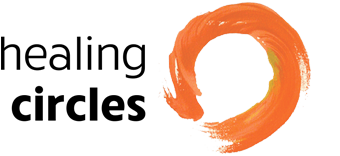Strategies for Pain Relief
Note from Diana Lindsay (co-founder of Healing Circles Langley): Co-hosts Josh Berkowitz and Penelope Bourke started the first healing circle for those impacted by chronic pain at Healing Circles Langley in spring of 2016. Although they were new to hosting circles, their life experience in group dynamics and their personal experience of chronic pain proved invaluable to the group. With my own recent experience of chronic pain as a result of radiation treatment, I sat in to learn.
Before every circle, we read the five Healing Circles Langley agreements. I’ve come to my own explanation of what they mean, but I’ve already discovered that deepening this understanding is a lifelong study.
We had three important learnings:
- On the nature of chronic pain: Research on chronic pain reveals that sharing the story of the pain over and over can actually make the pain worse. The neuroscience principle of “use it or lose it” has a corollary, “Lose it by not using it,” which can be triggered by breaking the patterns of how we tell our stories of pain and how we break our habits of managing it. So we changed the name of the circle from “for those impacted by chronic pain” to “Strategies for Pain Relief” and the focus on proactivity paid off. “There are no victims here, which is very unusual,” said one member who had founded a clinic for pain in his professional life. Some members adopted new strategies in the spring and started to see results over the summer.
- Flexibility is key: Pain doesn’t keep a calendar, which impacts the lives of both circle members and circle hosts. We made sure our hosts had back-up support and we were happy with any size circle on any given week. A circle of two can often be profound.
- Being present is the agenda: Our local hospital offered a pain program built on a prescribed multi-week agenda. While the program was successful for those newly confronted with pain, our circle of pain veterans did not want a prescription. They wanted to be present with their pain as it was that week and focus on physical, emotional, mental, and spiritual strategies as they were arising. The one tool they requested continue was Josh’s use of a guided meditation to begin the circle. Josh is a trained Mindfulness-Based Stress Reduction (MBSR) teacher. The circle finds the meditation calming and often uses it to help them with their pain during the days between circle.)
These were my notes from our second session, Mental Strategies for Chronic Pain Relief:
- Welcome
- Agreements and practices to make a truly safe space (if any new members)
- Guided meditation on observing one’s thoughts as objects moving across the field of awareness, with emphasis on watching the thoughts come and go, as opposed to getting captured by their specific contents.
- First circle: Did you find particular types of thoughts that were more difficult to just observe than others? People began to share in general about their experience of using mental strategies to work with physical and emotional pain and so we moved into the larger discussion about mental strategies.
- Second circle: What mental strategies do we use for working with our pain? Discussed a list of possible mental strategies for people to consider in the circle and to draw upon after the circle was over.
Additional strategies and themes discussed:
- Trusting ourselves: trusting our intuition and our sense of what we need or what feels right (with respect to our pain/illness, which medical professionals we trust in, what we need in our own healing, etc.).
- Reframing pain and disability as an opportunity (for growth, personal and spiritual development, etc.) as opposed to as a curse or burden that just depresses or defeats us.
- Trying to move beyond “survival” and into thriving (life after survival): focusing on getting beyond a constant state of crisis and, instead, into a richer place of more stability (at least mental and emotional) with more attention given to fully living our life rather than being in a constant state of reaction to our pain, illness, or limitations.
- Viewing life circumstances (pain, illness, depression) like weather, which we can’t change or control but must learn to adapt to and accept.
- Struggle with our resistance to not being able to “muscle through” the problems of pain and illness the way many of us learned to deal with other problems in our lives. Letting go of our idea that we can just force a fix to every problem.
- What strategies might you try working with this week?
- Meditation: either observing the pain, thoughts, or emotions or directing attention to some other aspect of our experience
- Visualization
- Positive thinking (deliberately thinking positive or hopeful thoughts)
- Fantasizing about something positive
- Distraction from pain (occupying the mind with another focus, such as reading, watching TV/movies, thinking about something in particular)
- Listening to music
- Writing
- Tapping into creativity
- Engaging with humor or laughter/smiling: Thinking about humor, laughing (even forcing it at first) or smiling changes brain chemistry
Header photo by Corrine Bayley




